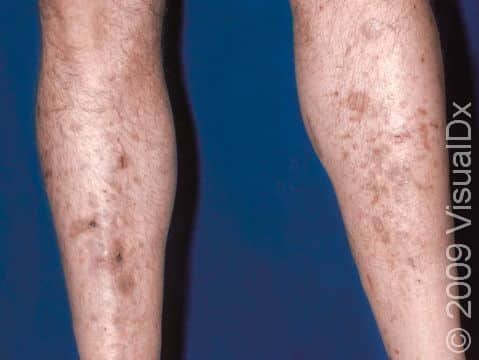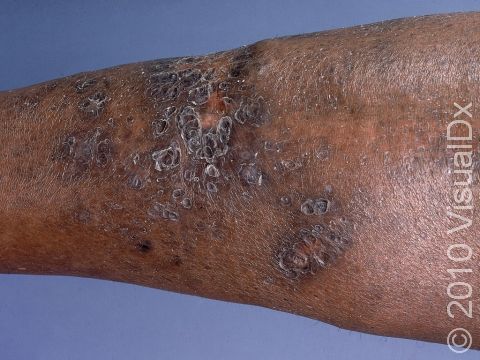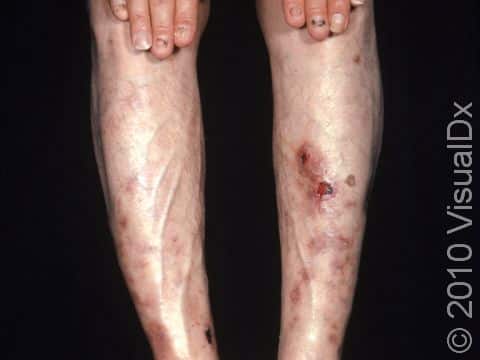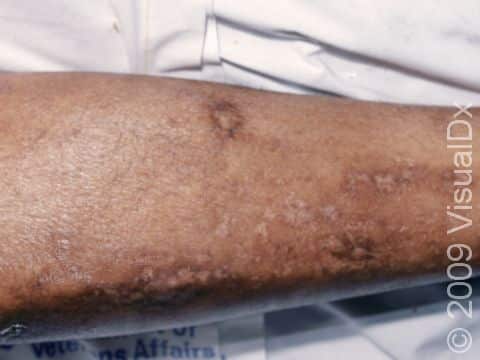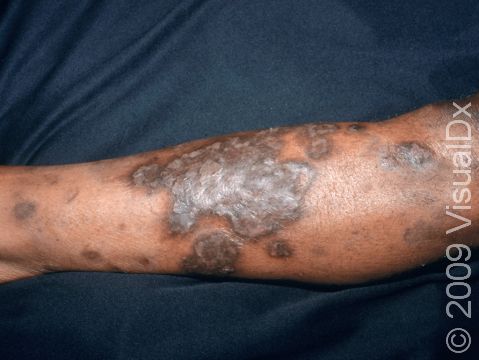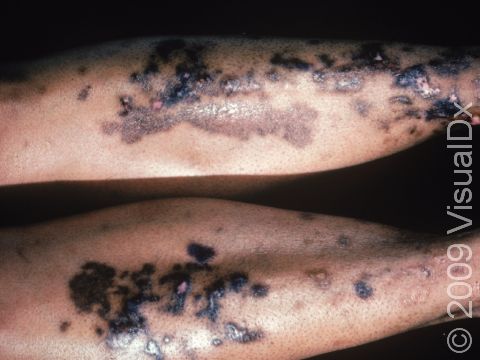Diabetic Dermopathy
Diabetic dermopathy, commonly known as shin spots, is a skin condition usually found on the lower legs of people with diabetes. It is thought that diabetes affects the small blood vessels in the shins, which causes this condition.
Who's At Risk?
Diabetic dermopathy is most common in people aged 50 years and older. It is more common in men than women.
Diabetic dermopathy affects up to half of people with diabetes, and it seems to be even more common in people with long-standing or poorly controlled diabetes.
Signs & Symptoms
Diabetic dermopathy appears as pink-to-red or tan-to-dark brown patches (flat areas of skin that are larger than a thumbnail) on the lower legs. They can be as small as 0.5 cm to quite large, covering most of the shin. The patches are slightly scaly and are usually round or oval. Long-standing patches may become slightly indented (atrophic).
Diabetic dermopathy does not typically itch, burn, or sting.
Self-Care Guidelines
The skin lesions of diabetic dermopathy often improve over time. Use a thick moisturizer (eg, CeraVe moisturizing cream), and try to avoid any injury to the legs to prevent worsening of lesions or the development of new lesions.
Treatments
Your medical professional will likely stress the importance of diabetes management, including controlling blood sugar, because appropriate diabetes management will help improve lesions as quickly as possible. Diabetic dermopathy should improve with time without any further treatment.
Visit Urgency
Diabetic dermopathy is harmless and does not require any treatment. However, if you think you have diabetic dermopathy, see your medical professional to ensure optimal diabetes management.
Trusted Links
References
Bolognia J, Schaffer JV, Cerroni L. Dermatology. 4th ed. Philadelphia, PA: Elsevier; 2018.
James WD, Elston D, Treat JR, Rosenbach MA. Andrew’s Diseases of the Skin. 13th ed. Philadelphia, PA: Elsevier; 2019.
Kang S, Amagai M, Bruckner AL, et al. Fitzpatrick’s Dermatology. 9th ed. New York, NY: McGraw-Hill Education; 2019.
Last modified on August 22nd, 2023 at 10:00 am

Not sure what to look for?
Try our new Rash and Skin Condition Finder
